March Birthstone: A Complete Guide + Alternative Stones
For birthdays that kick off the spring season, March babies have two official birthstones. The two March birthstones are aquamarine and bloodstone, both with contrasting appearances but equally rich lore.
The month of March is named after Mars, the Roman god of war, because this was when Roman soldiers would resume campaigns after their postponement for winter. Technically, March (or Martius) was the first month in the Roman calendar before January and February were added to align better with the lunar year.
Besides returning to battles, ancients also returned to farming and traveling, with the spring equinox on March 20 (or autumnal equinox in the Southern Hemisphere). Many festivals occurred, most celebrating Mars or the new year.
Today, March symbolizes new beginnings, rebirth, and hope for the future. Additionally, the month celebrates equality as Women’s History Month, plus International Women’s Day on the 8th.
With March’s meaning established, we’ll dive into the meanings, history, and properties of the two March birthstones, bloodstone and aquamarine.
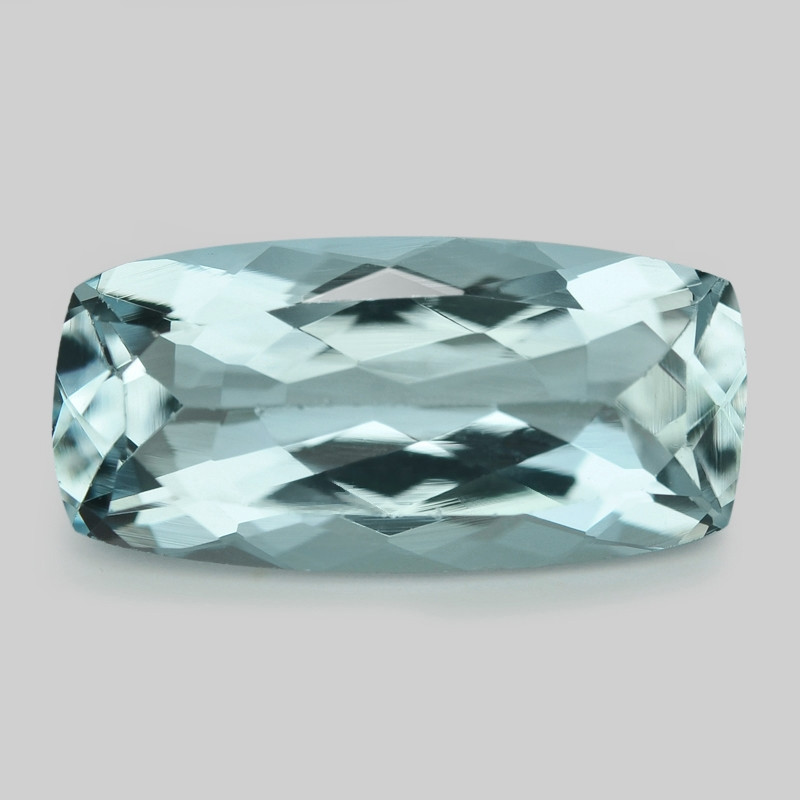
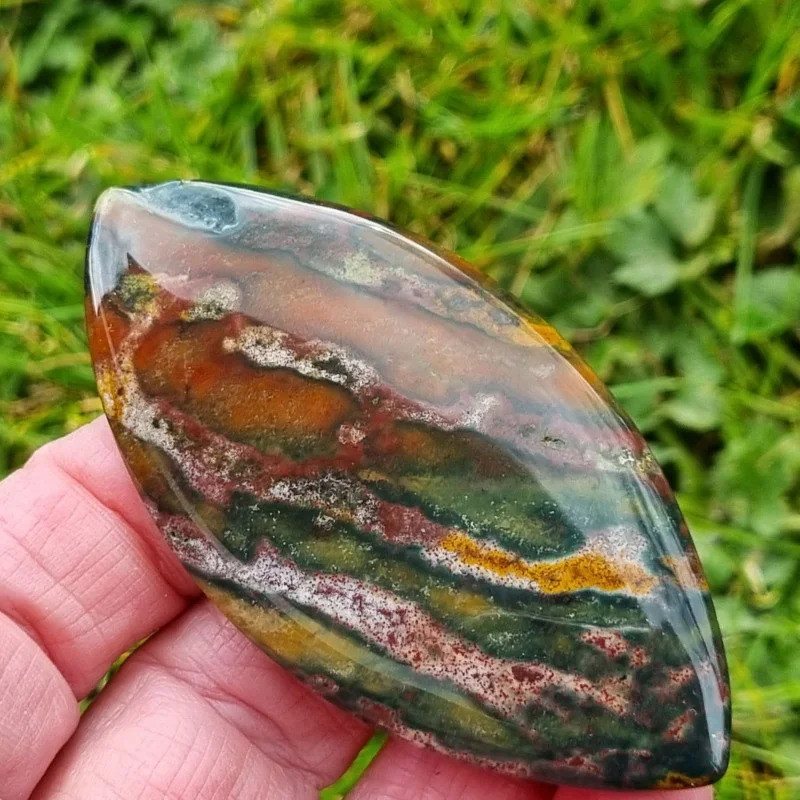 Pictured above: Faceted aquamarine gemstone (top), bloodstone cabochon (bottom)
Pictured above: Faceted aquamarine gemstone (top), bloodstone cabochon (bottom)
What Are the March Birthstones?
March has two traditional birthstones: aquamarine and bloodstone. These semi-precious gemstones are equally legendary but with stark contrasts:
Color: Aquamarine has soft, sea-green to sky blue hues; bloodstone has deep forest green coloring with crimson splashes.
Transparency: Aquamarine gems are usually transparent; bloodstones are usually opaque.
Gemstone Shapes: Aquamarines are usually faceted; bloodstones are usually cut into cabochons.
Wedding Anniversaries: Aquamarine is the traditional 18th wedding anniversary gem, and bloodstone is an alternate 14th anniversary gem.
But why are there two birthstones for March? In short: history!
Origins of March Birthstones
Birthstone traditions go back to the 1st century AD, when historians connected Biblical lists of 12 stones to the 12 months of the year and 12 zodiac signs.
In early birthstone lists, bloodstone was the only March birthstone.
However, accurate gem identification didn’t come around for a long time, so the actual stones in ancient texts are debated. Plus, people didn’t start wearing the birthstones of their own personal birth month until jewelers in Germany or Poland started selling birthstone jewelry around the 1500s.
The standardized lists we know today started around the 1800s, with Tiffany & Co. publishing birthstone poems in 1870, credited to an anonymous Gregorian author.
Here’s the March poem from that pamphlet:
“By her who in March was born
No gem save Bloodstone shall be worn
They will ensure her constancy
True friendship and fidelity.”
The National Association of Jewellers (now Jewellers of America) created a standardized birthstone list in 1912. The Jewelry Industry Council of America updated the list in 1952, and other (largely similar) lists emerged.
On these lists, aquamarine was given as an alternative to bloodstone.
Today, the British and American birthstone lists prioritize aquamarine over bloodstone, but still list both.
So, is the March birthstone aquamarine or bloodstone? It’s both! You might call bloodstone the “traditional” birthstone and aquamarine the “modern” birthstone.
Speaking of traditions, let’s look at these two gemstones’ histories.
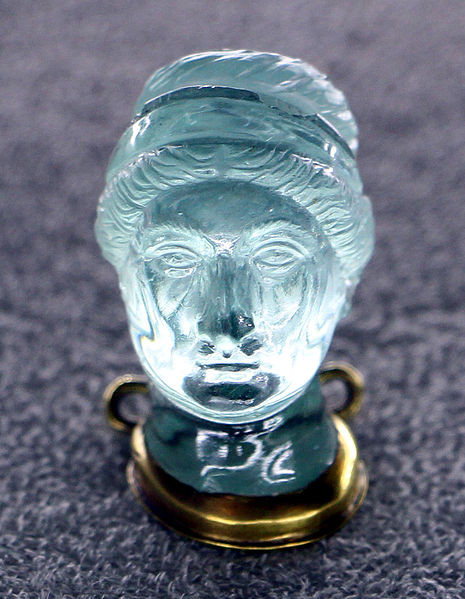 Pictured above: Ancient art, head of an empress in aquamarine, perhaps Matidia, restored in gold at the base; Dated 2nd century (description translated from Italian)| Image credit: Sailko, CC-BY-SA-3.0
Pictured above: Ancient art, head of an empress in aquamarine, perhaps Matidia, restored in gold at the base; Dated 2nd century (description translated from Italian)| Image credit: Sailko, CC-BY-SA-3.0
Historical & Cultural Context of March Birthstones
One quality the two March birthstones share is rich, expansive history full of legends and lore!
Historical Uses of Aquamarine
Aquamarine’s name comes from the Latin terms aqua, for “water” and marine, for “sea,” for its resemblance to seawater. Although this moniker came in 1609, the formerly named “sea-green beryl” was known for centuries.
Ancients believed the March birthstone provided protection at sea, often carving it into talismans. Legends about aquamarine’s origins ranged from being lost treasure of mermaids to being created by the sea god Poseidon (or Neptune).
Many ancients associated aquamarine with the joy of youth and the passion of young love.
During the Middle Ages, aquamarine was believed to protect from poisoning (making it popular among royalty) and facilitate psychic abilities.
Christians associated aquamarine with St. Thomas, the patron of sailors. Some also believed the gem encouraged happy marriages.
Buddhists similarly believed aquamarine signified love. One tradition in India involves gifting aquamarine jewelry to newlyweds.
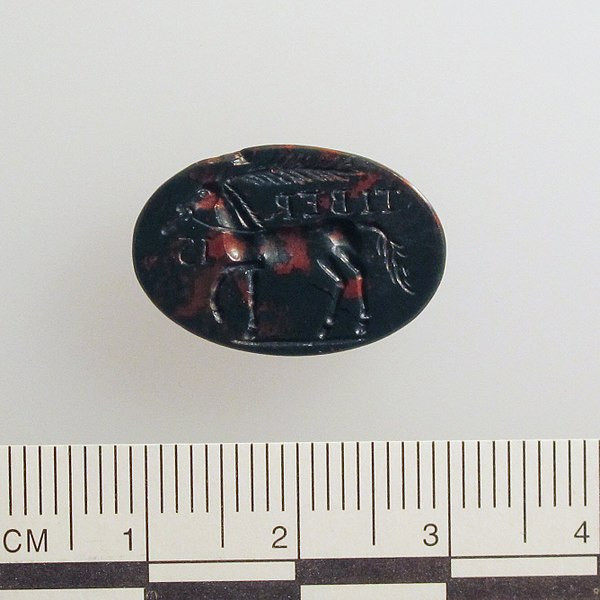 Pictured above: Roman Imperial heliotrope intaglio of cock-headed anguipes (divinity with serpents for legs), dated 3rd century AD, displayed at Metropolitan Museum of Art | Image credit: Met Museum, Public domain
Pictured above: Roman Imperial heliotrope intaglio of cock-headed anguipes (divinity with serpents for legs), dated 3rd century AD, displayed at Metropolitan Museum of Art | Image credit: Met Museum, Public domain
Bloodstone in Historical and Mystical Contexts
The name “bloodstone” refers to its typical blood-red, drop-like patterns.
However, the ancient Greek name was “heliotrope,” derived from the terms helios, meaning “sun,” and trepo, meaning “turn,” because the stone looked entirely red under the setting sun or when placed underwater in direct sunlight.
Ancients used bloodstone for practical and mystical purposes.
Babylonians created bloodstone seals, and noblemen wore bloodstone signet rings for stamping important documents. Mesopotamians and Babylonians also used bloodstone for scrying, while Egyptians, Romans, and Greeks believed the March birthstone made them stronger in battle or sports.
Ancient Roman scholar Pliny the Elder wrote that bloodstones were mirrors of the sun, allowing one to see solar eclipses. Another ancient Roman author, Damigeron, wrote that bloodstones foretold the future and, “if it is put in a silver basin full of water and placed against the sun, it turns to it and makes it as if bloody and cloudy.”
Bloodstones engraved with suns or torches were often worn by freed slaves to signify their liberation.
A common nickname was “martyr’s stone,” which eventually led to the name “bloodstone.”
A Christian legend arose about bloodstone originating at the crucifixion of Jesus Christ. The story goes that the stone formed when Christ’s blood fell onto either the green earth or a green jasper below the cross (tellings differ). As such, some believed the stone healed issues related to blood circulation.
By the Middle Ages, the martyr connection persisted with bloodstone sculptures depicting acts of martyrdom and amulets believed to represent Christ’s sacrifice.
Medieval Europeans made bloodstone elixirs for treating hemorrhages, tumors, and snake bites. In India, powdered bloodstone was used as an aphrodisiac.
Nowadays, India is one of the top sources for bloodstone, which brings us to the origins of these March crystals!
 Pictured above: Aquamarine rough
Pictured above: Aquamarine rough
Geological Origins & Properties of March Birthstones
Aquamarine is a variety of beryl. Beryl stones are pretty durable, ranking 7.5 to 8 on the Mohs hardness scale. These minerals usually form in granite pegmatites that are beryl-bearing.
Impurities present lead to the range of colors, like the ferrous or ferric iron behind aquamarine’s blue to green hues. Meanwhile, parallel or perpendicular bunches of hollow tube inclusions can allow for slight chatoyancy (the “cat’s eye” effect) or asterism (the “star” effect). Some of the best aquamarines come from Siberia and Brazil.
Bloodstone is a variety of chalcedony, or microcrystalline quartz. Some classify bloodstone as a type of jasper, a chalcedony subcategory for opaque, patterned stones.
The formation of this March birthstone is similar to other quartz stones, but the red splotches come from inclusions of hematite. Most gem-quality bloodstones come from India.
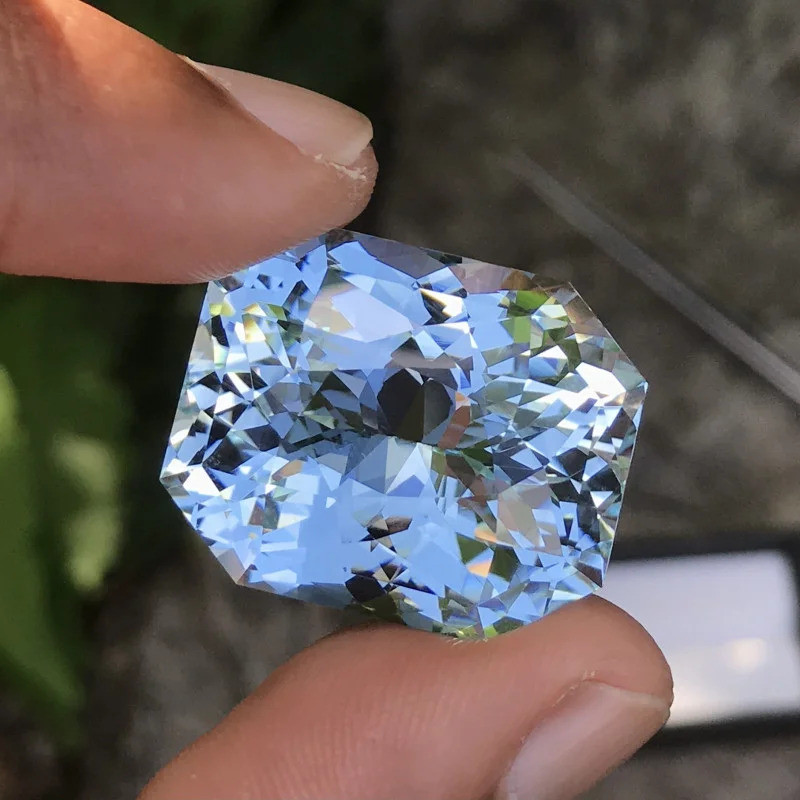 Pictured above: Faceted Santa Maria blue aquamarine
Pictured above: Faceted Santa Maria blue aquamarine
Shades of Blue and Green: Aquamarine's Delicate Palette
Despite only ranging from blue to green, aquamarine’s color palette is surprisingly varied. Higher values go to purer, more saturated blue hues, but usually, these March birthstones’ colors are pale greenish-blue.
Certain colors have distinct trade names:
Santa Maria: Medium-dark, high-saturation blue; Discovered in Brazil’s Santa Maria de Itabira mine
Espirito Santo: Lower saturation of blue than Santa Maria but unique brilliance and deep color
Maxixe: Very dark blue color; Rarely found naturally in Brazil’s Maxixe mine; Usually produced by unstable irradiation treatment (prone to fading)
Nampula: Robin’s egg blue; Found in Mozambique’s Nampula province
Pedra Azul: Icy blue; Found in Brazil’s Pedra Azul district
Since purer blue colors are more valuable, many aquamarine gems are heat treated to remove green undertones.
Now, what does a bloodstone look like?
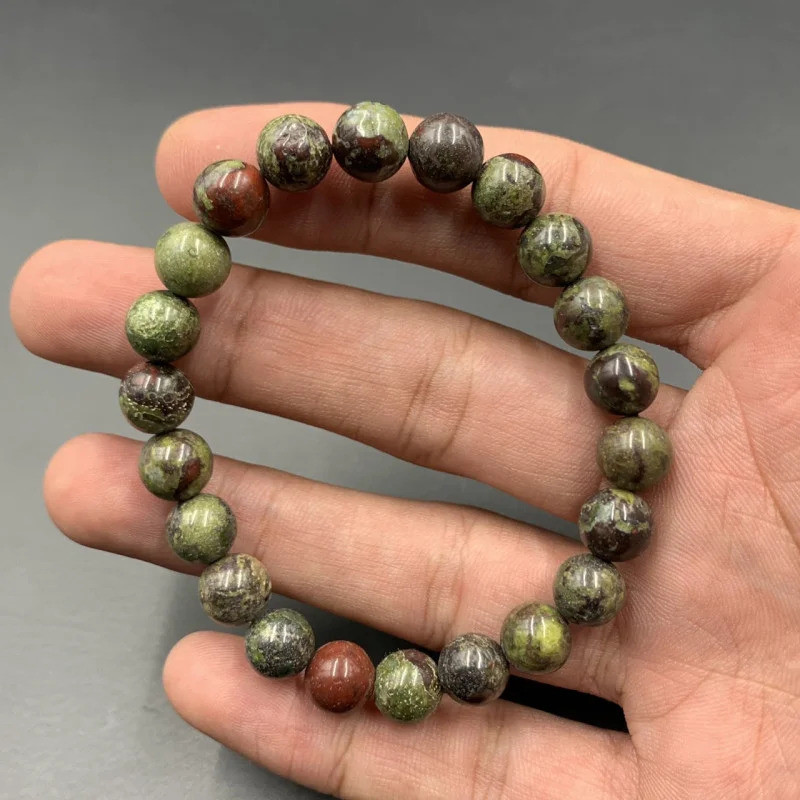
Bloodstone's Mystique: Deep Green and Red Speckles
Bloodstone is technically considered a type of plasma, a semi-translucent to opaque green chalcedony variety with yellow, white, or red speckling.
The classic bloodstone birthstone appearance is forest green with red specks. The spots and sometimes streaks on bloodstone can also be orange, brown, white, yellow, or a combination of these earthy hues.
Besides the red hematite inclusions, other mineral inclusions behind bloodstone’s coloring include amphibole, chlorite, and pyroxene.
Some classify “heliotrope” bloodstones as translucent with red speckles and “plasma” bloodstone as opaque with very few red spots.
Some variations with trade names:
Blood Jasper: Spotted reddish-black with white veining
Fancy Jasper: Predominant colors besides green and red, or varied color combinations
Besides appearances, another contrast between aquamarine and bloodstone is their spiritual meanings and uses as healing stones.
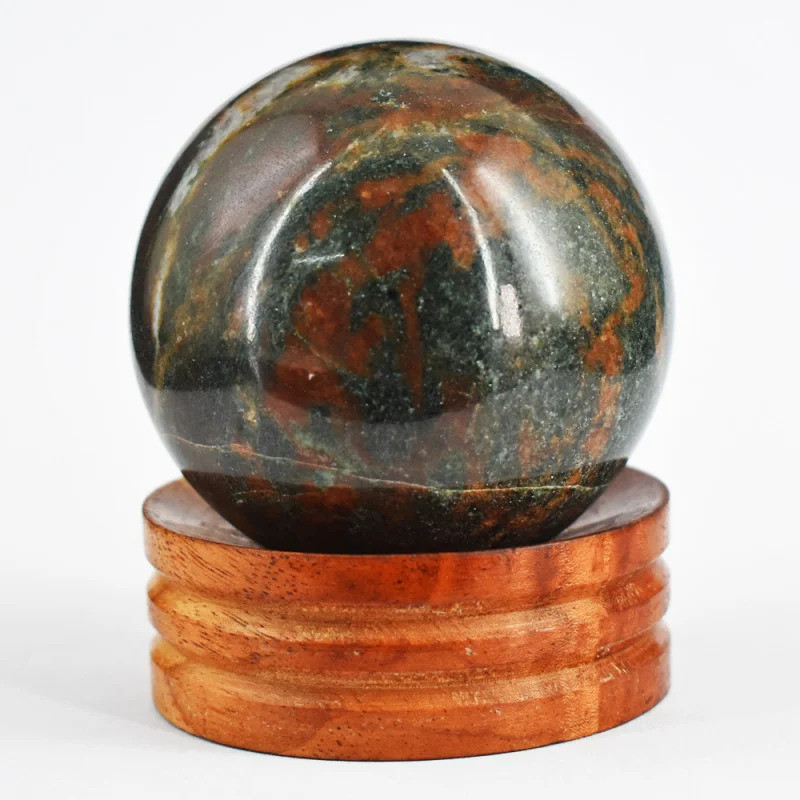 Pictured above: Bloodstone healing ball
Pictured above: Bloodstone healing ball
Spiritual & Metaphysical Significance
The aquamarine birthstone’s meaning is one of cleansing, serenity, and youth. Meanwhile, bloodstone symbolizes strength, endurance, and sacrifice.
In energy healing, aquamarine is a chakra stone for the throat chakra, while bloodstone opens the root (base) chakra.
However, some of the March birthstones’ meanings overlap:
Courage: Both stones are said to boost courage, with aquamarine focusing on self-empowerment to bravely speak your truth and bloodstone focusing on physical courage to go after your dreams.
Cleansing: Each stone may offer cleansing and purifying properties, removing negativity and helping you start fresh.
Overcoming Obstacles: Aquamarine is believed to help you tackle emotional obstacles, like communication in a relationship. Bloodstone is said to be protective and help you overcome obstacles to your success.
Astrologically, aquamarine perfectly matches the sensitive water energy of Pisces (born February 19 to March 20). Meanwhile, bloodstone reflects the fiery, ambitious Aries (born March 21 to April 19) ruled by Mars.
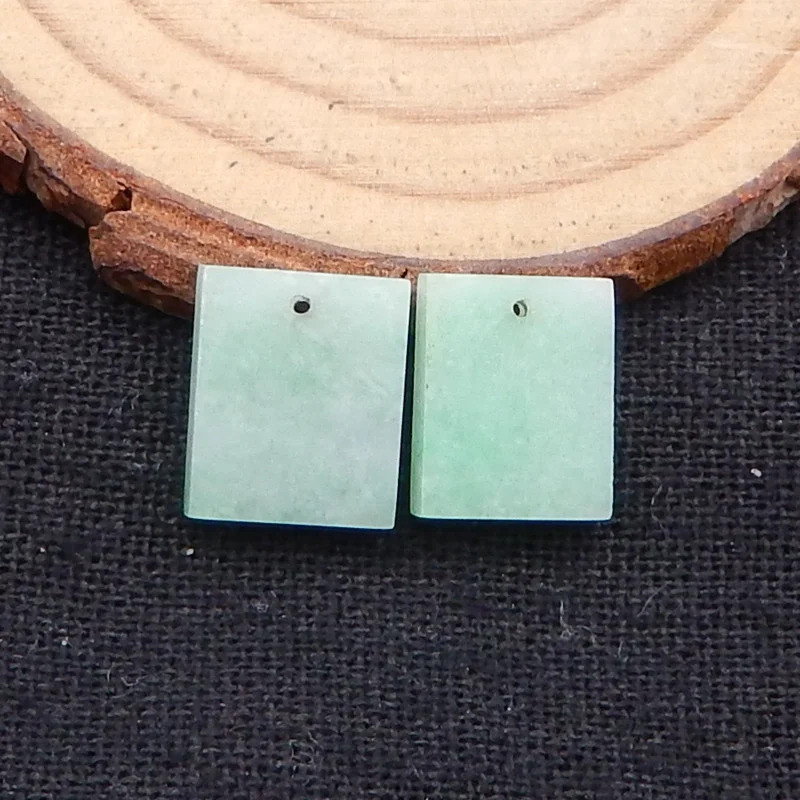 Pictured above: Carved jade earrings
Pictured above: Carved jade earrings
Exploring Alternative March Birthstones
Are aquamarine and bloodstone not your vibe? You have other options!
The mystical March birthstone, rooted in ancient Tibetan astrology, is jade, which captures the sweetness of spring with the durability of Mars.
A second alternative March birthstone is jasper — similar to bloodstone but more variety.
Another green option is emerald, the birthstone of spring. The beryl sister of aquamarine, emerald has a deeper green coloring and also represents new growth.
Price-wise, bloodstone is much more accessible, and aquamarine can be pricey for some.
Some more affordable aquamarine birthstone alternatives:
You can also opt for a synthetic aquamarine, which is created in a lab but has all the same chemical and physical properties of natural aquamarine.
 Pictured above: Queen Elizabeth II wearing her aquamarine tiara (described below) at the Brazilian State Banquet on March 7, 2006 | Image credit: Agência Brasil, CC-BY-SA-3.0 | Original file
Pictured above: Queen Elizabeth II wearing her aquamarine tiara (described below) at the Brazilian State Banquet on March 7, 2006 | Image credit: Agência Brasil, CC-BY-SA-3.0 | Original file
Contemporary & Famous Jewelry Designs
Both aquamarine and bloodstone have been featured in many unique jewelry designs in modern times.
Aquamarine
As a March birthstone or simply a gorgeous accessory, faceted aquamarine gemstones shine with soft coloring but powerful radiance.
Aquamarine birthstone rings — or engagement rings – are quite popular, often set beside white or light-colored accent stones like white diamonds.
Some famous examples of aquamarine jewelry include:
Queen Elizabeth’s Aquamarine Tiara: Commissioned by Queen Elizabeth of Britain in 1957, Garrard created this platinum tiara featuring Brazilian aquamarines and diamonds given to her by Brazilian President Getúlio Vargas in 1953. The Governor of Sao Paulo donated a larger aquamarine to replace the centerstone in 1971.
Hirsch Aquamarine Pendant: This emerald-cut, 109.92-carat aquamarine is set in a white gold pendant with 118 micro pavé-set diamonds. It was formerly owned by French Emperor Louis XV, who reportedly harnessed its calming properties.
Meghan Markle’s Engagement Ring: This yellow gold ring has an emerald-cut, light blue, 13-carat aquamarine centerstone with smaller accent diamonds. The ring was made by Asprey and given to Diana by Lucia Flecha de Lima around 1996. Diana’s son Prince Harry gave the ring to Meghan Markle, who wore it on their wedding day in 2018.
Bloodstone
Unlike aquamarine, bloodstone is a rich, earthy, and weighted stone with colors that reflect these traits.
The March birthstone is usually cut into cabochons or carvings, so many bloodstone jewelry pieces are pendants or beaded bracelets. However, carved or cabbed bloodstone rings reminiscent of ancient styles are gaining popularity, especially in gorgeous gold settings.
Bloodstone doesn’t appear in much royal jewelry, but one royal bloodstone (arguably the most famous bloodstone) is the seal of Holy Roman Emperor Rudolf II (1552 to 1612). On display at the Louvre Museum in Paris, the emperor’s seal is carved into this bloodstone.
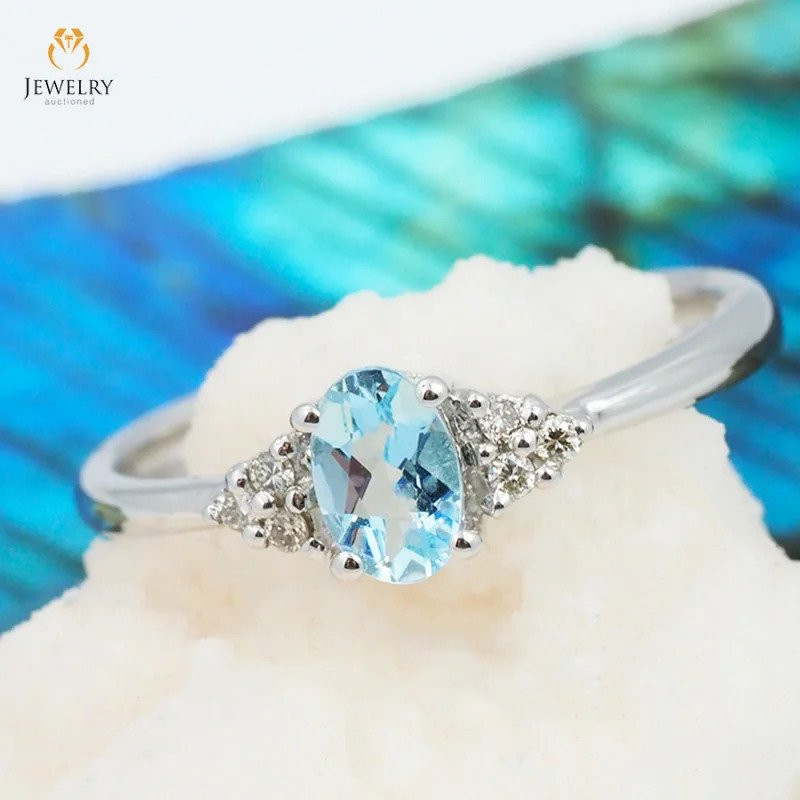
Which March Birthstone Matches You?
Are you tempted by the soft, ethereal aquamarine or the rich, earthy bloodstone? Both March birthstones offer courage and healing, while matching the month’s associations with new beginnings. Regardless, either stone in March birthstone jewelry has timeless appeal!
Find traditional and alternative March birthstones from our hundreds of gemstones available!
Was this article helpful?
5 people found this article helpfulRoss Sedawie
- Written - 26th Mar 2016
- Edited - 17th Sep 2023
















